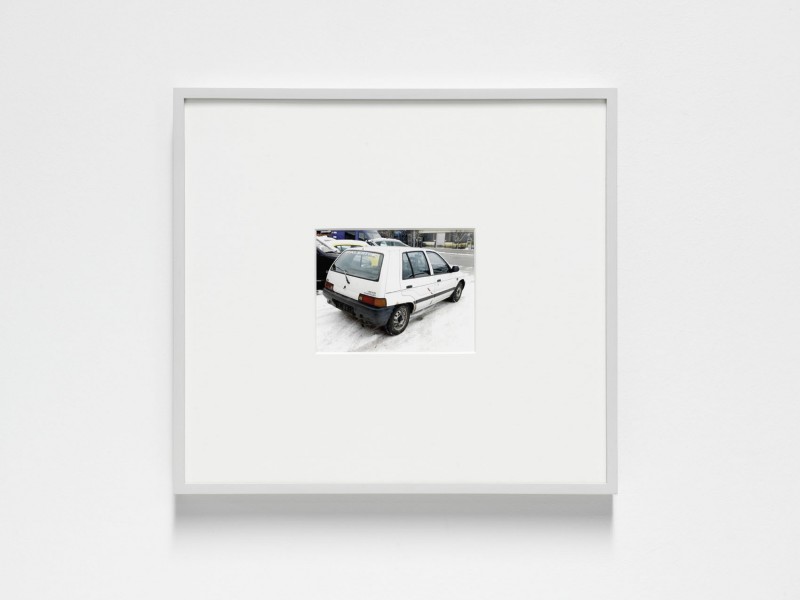

Bojan Šarčević, She, 2010, Onyx, 184 x 124 x 40 cm and installation view of the exhibition At Present, 2011
‘Space is the remains, or corpse, of time; it has dimensions’, wrote Robert Smithson in 1969, a definition highly appropriate to the 76 small collages, arranged together in small groups, that made up this show by Bosnian artist Bojan Sarcevic. Each collage starts with a small black-and-white photograph of a 1950s Modernist interior (or occasionally exterior) of the type found in architectural journals of the time. But their calm, orderly surfaces are disrupted by a tumultuous play of geometric shapes that redistribute details of shade and form as if infected by an anti-Modernist poltergeist. A sweeping staircase dissolves into a froth of tumbling circles; an empty auditorium is invaded by a flock of swooping triangles; the whole façade of a country house spins in a kaleidoscope of interlocking hexagons until barely discernible. Sarcevic’s trick is simple – he has cut the shapes out of the photographs, rotated them or swapped them around and inserted them seamlessly back in. But even when you are aware of this painstaking and repetitious process the results are baffling, various and extremely seductive.
The collages’ vague sense of time and place is located somewhat more precisely by their title, 1954 (all works 2004), which refers to the 1954 edition of the German architectural journal Baumeister, from which the pictures are taken. Germany in 1954, after two lost decades and the horrors of war, was tentatively starting to rebuild its traumatized national morale (helped in no small measure by the country’s unexpected World Cup victory that same year.) And, despite the absence of the country’s greatest modern architects, Walter Gropius and Ludwig Mies van der Rohe, architecture flourished in the steady rebuilding of cities reduced to rubble by Allied bombing, and was characterized by a cautiously optimistic Modernism. This was the year that Mies began his monumental Seagram building in New York, but the pictures Sarcevic collects here are more modest examples of a socially oriented Modernism, felt at the time to be not only an expression of, but also a form of active participation in, the creation of Germany’s new democracy. There is, however, not a single person to be found here, in these static, polished rooms. Like Smithson’s corpse, the spaces are frozen memorials to a past time, fixed in a pristine state of endless anticipation. Who knows if they were ever inhabited, and what they look like now? In Sarcevic’s hands it is as if the wear and tear of human use have been replaced by the unruly spirit of a fermented formalism that rearranges particles at whim.
There is a strong relation to Russian Construct-ivism here. Some of the collages look as if space itself has been fanned out into a hanging Rodchenko spatial construction, while a group of three terribly fragile sculptures on the gallery floor, tiny spiralling structures of sandblasted glass plates held together with tape, could be miniature versions of Vladimir Tatlin’s Monument to the Third International (1919). They also seem to point towards an integration of art into the everyday, as propounded by the Constructivists in Aleksander Rodchenko’s slogan: ‘Work in the midst of everything and with everybody.’